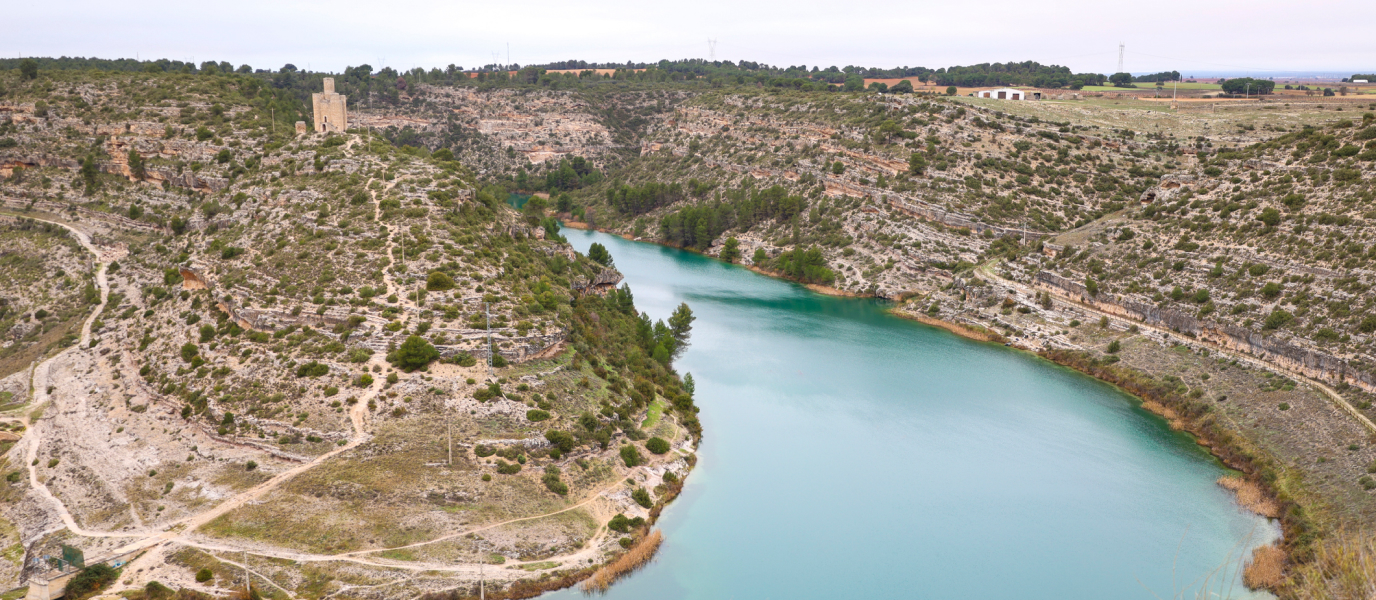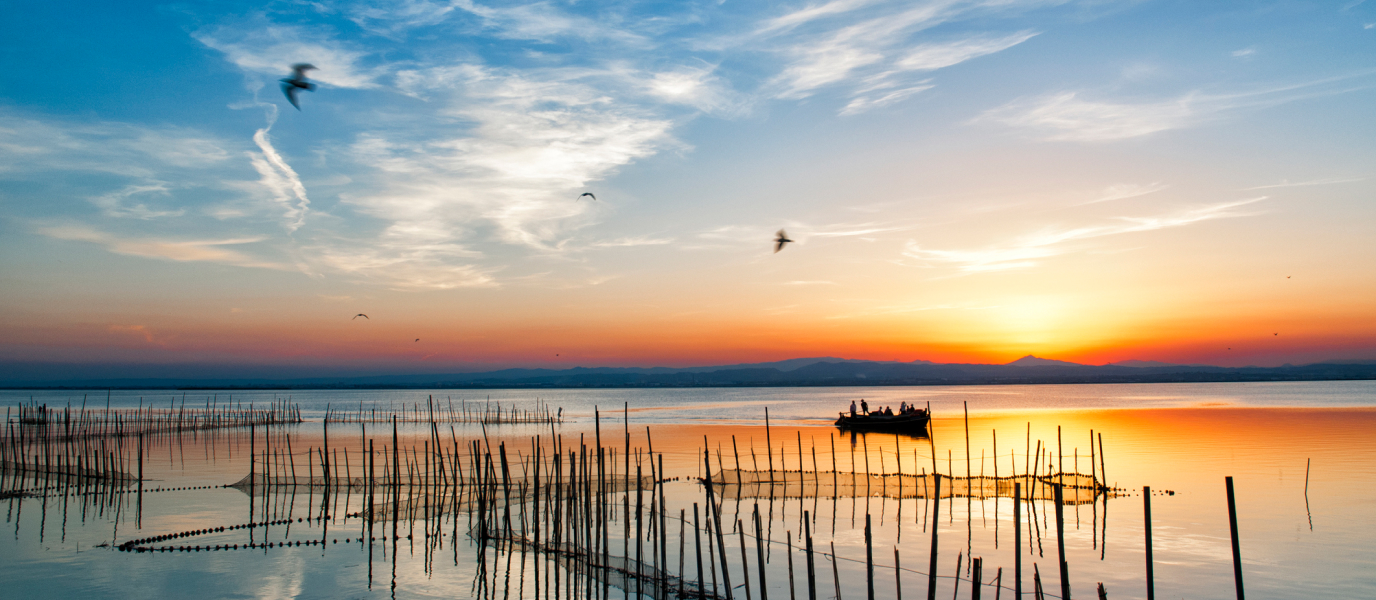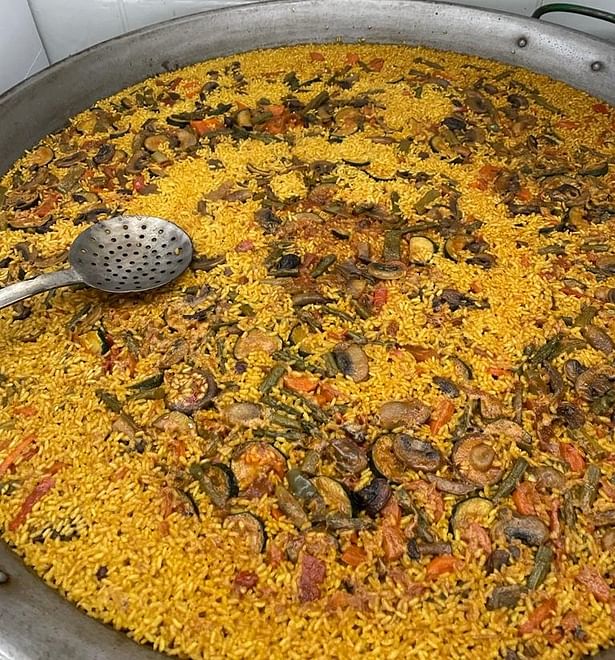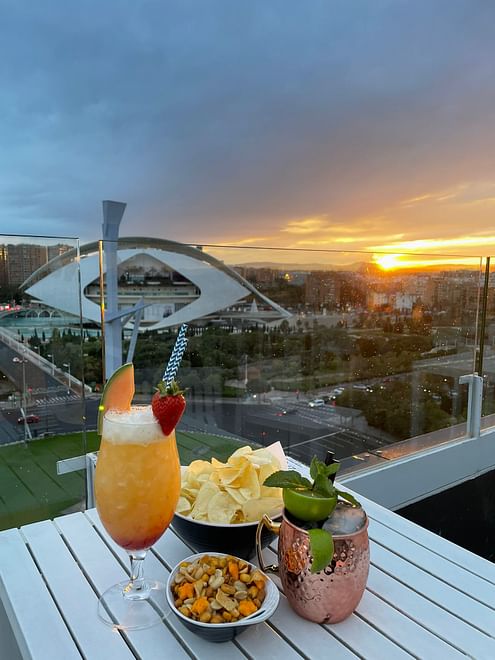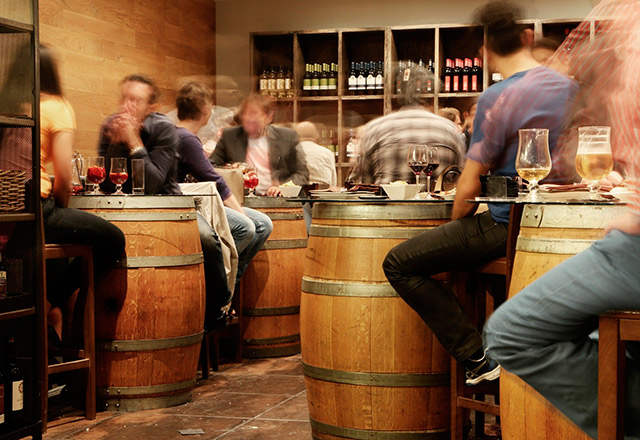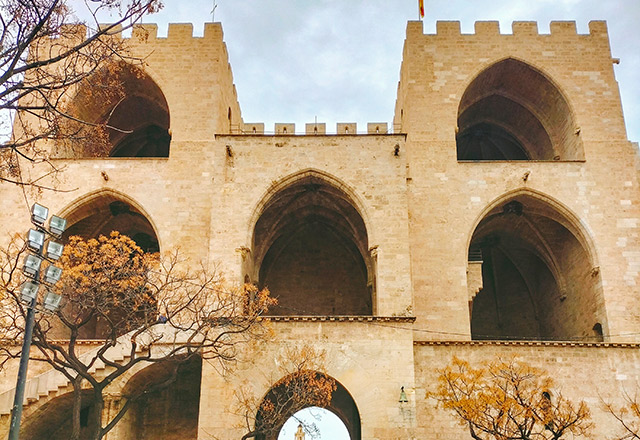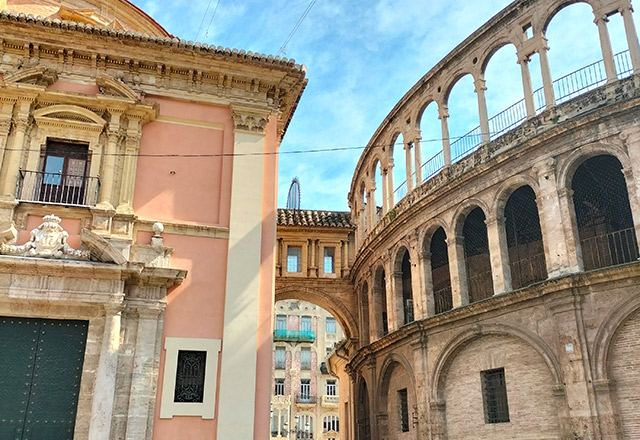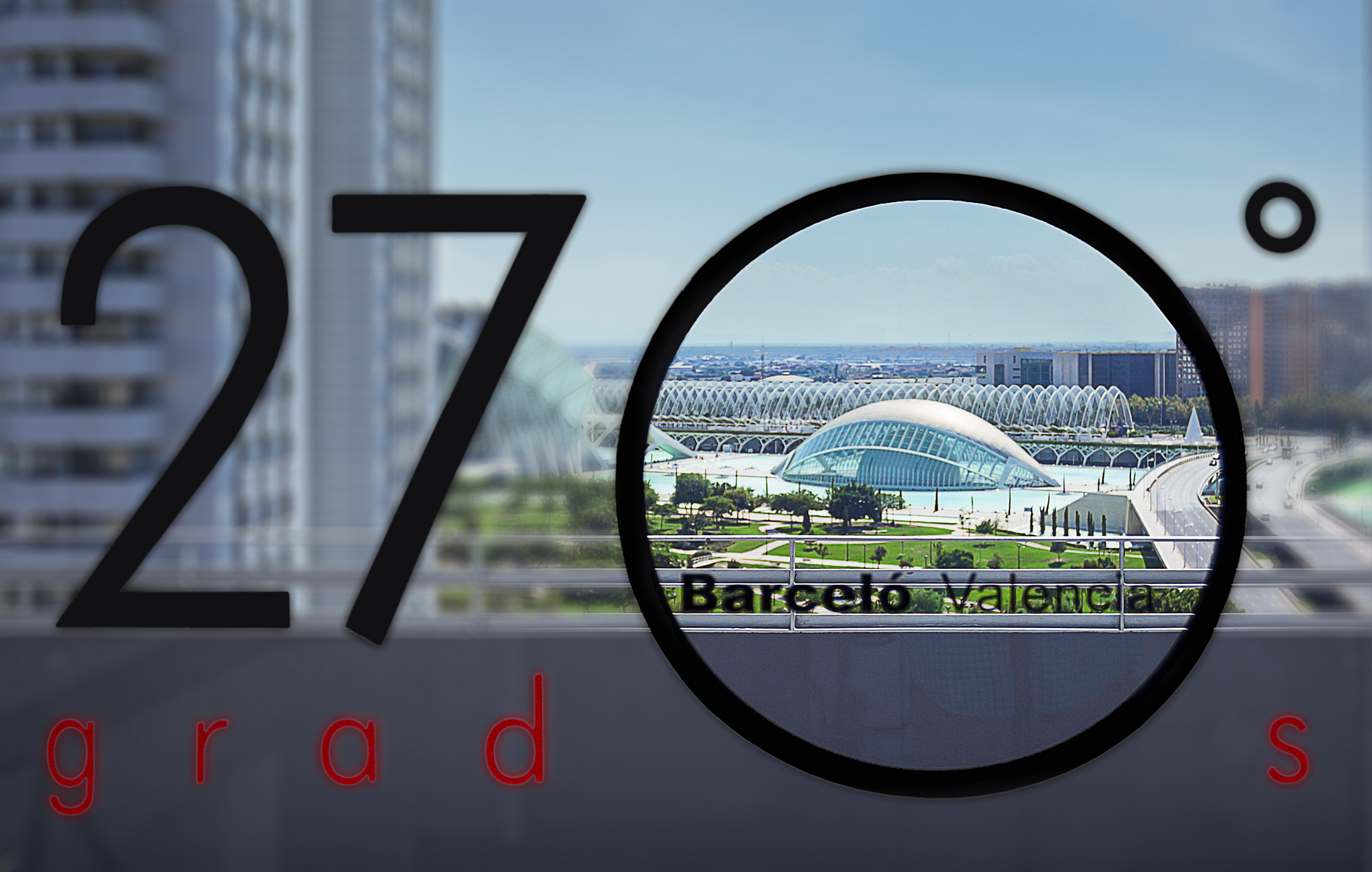Bioparc has been a major attraction in Valencia ever since it opened next to the city’s Parc de Capçalera. Visitors cross a 145 m walkway over the park’s lake to reach this new concept of zoo where the animals can be observed without the obstruction of visible barriers. The zoo recreates the different ecosystems of the African continent and is considered to be one of the 10 best animal parks in the world.
As you enter Bioparc, you’re welcomed by a huge sculpture of an elephant that weighs 15 tonnes and stands 8 metres high—a prelude to what you’ll find within: Africa’s largest inhabitants. Once inside the park you’ll quickly see that different species of animal live alongside each other, just as they do in nature. This arrangement, together with the absence of visible barriers and the wide field of view, helps to create an immersive zoo experience that feels as though you’re observing these creatures in their natural environment. The habitat of each animal has been carefully recreated by architects and engineers who worked hard to bring the concept of this zoo to life.
The Bioparc ethos is also concerned with raising awareness and changing people’s behaviour so that we can live in harmony with nature. As a result, throwing food at or disturbing the animals is prohibited. The zoo has 10 hectares for the animals, three interpretation centres and two support classrooms. Different types of animal coexist alongside each other in multispecies areas just as they would in their real environment and this helps to develop natural behaviour.
Although the animals evidently still live in captivity, Bioparc firmly focuses on respecting and reproducing their biological needs, so animals that normally live in a herd or normally live in pairs do the same inside the zoo. This helps them to develop the proper social behaviour natural to their species. Plant life plays a role in integrating the animals into their environment and typical plant species are used in each recreated habitat.
Africa in Valencia
The park is divided into four large ecosystems: Madagascar, Equatorial Forest, Wetlands and the Savannah.
- African Savannah: Home to the large herbivores, such as elephants and giraffes, who undertake long migrations in search of water.
- Equatorial Forest: An area of rainforest where the treetops are busy with chimpanzees while, in contrast, the land is populated by otters, chameleons and leopards, among other species.
- African Wetlands: Recreation of the Kitum Cave in Kenya where you can spot crocodiles and hippopotamuses. The original cave was created by volcanic activity and elephants then made it larger by digging with their tusks.
- Island of Madagascar: This island in the Indian Ocean conserves many indigenous animal species despite its proximity to the African continent.
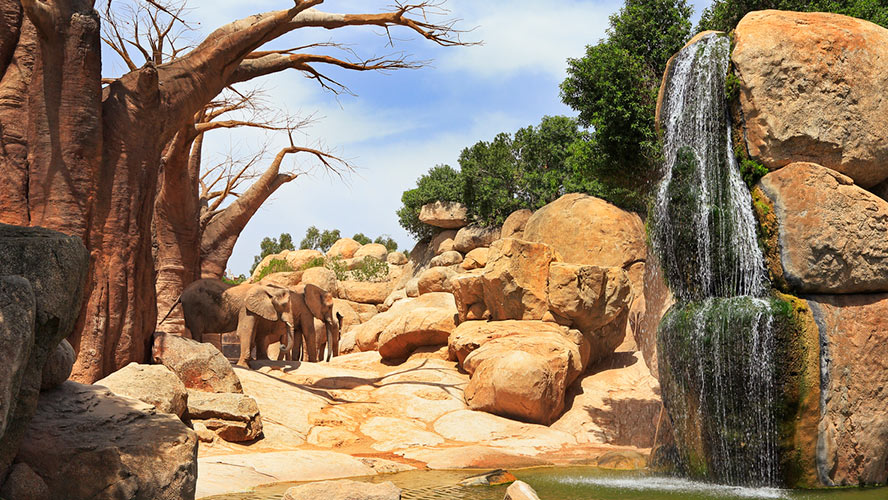
Activities with the animals
Bioparc gives you the chance to experience a series of important moments in the daily life of the animals through various activities.
- Good morning: At 10:15 AM watch the giraffes majestically stroll across a specially-designed drawbridge. Lemurs spring into action shortly afterwards and they leap through the Madagascar zone, mingling with the public.
- Meet the keepers: An up-close activity that lets you experience first-hand how the animals are cared for by the biologists in charge. Get a closer look at the world of the lions, gorillas, elephants and bird species. A fantastic way to find out more about each species, the threats it faces and its state of conservation.
- Feeding the animals: See how some of the species that live at Bioparc are fed. Check the schedule to make sure you arrive on time because there is limited space for observing this activity.
- Explore: Between 2:45 PM and 6:00 PM there are mini guided tours through the Baobab Forest, the Kitum Cave, the Equatorial Forest and the Savannah.
- Educational exhibition: An amazing live documentary featuring mammals and birds that illustrates the life cycle.
- Bird and mammal exhibition: The amphitheatre holds a maximum of 1,000 spectators and is located at the centre of the park. Throughout the day there are several shows that demonstrate animal behaviour and how animals have adapted for hunting or defence.
- Heirs to the Ark: The park has a huge cinema where the documentary “Heirs to the Ark” is screened; this film shows the role played by new zoos as centres for conserving endangered animal species.
- Good night: As the sun goes down it’s time to say good night to the hippopotamuses, giraffes, antelopes, rhinoceroses, zebras and ostriches. From 7:00 PM onwards you’ll have the chance to spot the aardvark, a strange nocturnal mammal that lives in the Savannah.
Eating in Bioparc
For safety reasons, bringing food or glass containers into the park is not permitted, nor is exiting and reentering the zoo. It’s more than likely that lunchtime will come around before you’ve had the chance to see the whole park and there are several dining options that you can choose from.
The main restaurant in the park is called Samburu. It serves fixed price menus and individual dishes including salads, pasta, chicken and, naturally, paella. Gluten-free menus are available if requested in advance. The restaurant has two air-conditioned rooms and terraces that look out over the Savannah. Keep an eye on your watch because it stops serving food at 4:00 PM.

If you’d prefer a light snack, visit the Kidepo café, next to the restaurant. Here you’ll find sandwiches, pastries (gluten-free available), coffee and soft drinks that are served all day.
There are also kiosks next to the children’s playground that open on weekends and public holidays and sell sandwiches, hamburgers, pizza and chicken wings.
And if you’d prefer something more elaborate, at the Bioparc Café the concepts behind the park can even be spotted in the dishes—an Africa-shaped pizza is simply irresistible! It also has a special play area for little ones so that they can have fun while the adults eat their lunch. It’s located in the square outside Bioparc just before you enter the zoo. If you decide to eat in the Bioparc Café and then want to return to the park, remember to exit through the gift shop and ask for a wristband; show your wristband and food receipt when you return and you’ll be readmitted.
So don’t miss out—discover African animals in Valencia in this different and innovative concept of a zoo.





































































